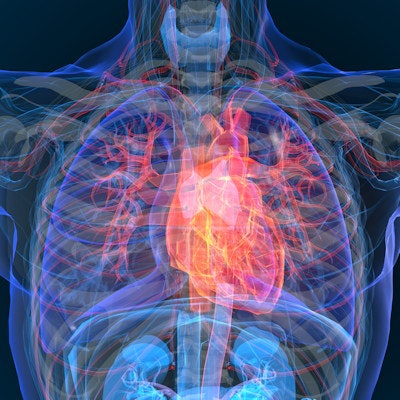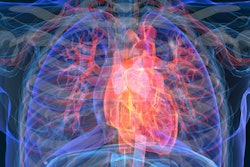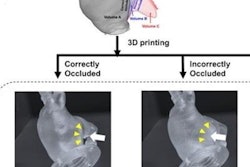
Men who were invited to participate in a screening program for heart disease that included cardiac CT scans didn't have lower mortality rates, a Danish study has found. Results were published August 27 in the New England Journal of Medicine.
The results, which were also presented August 27 at the European Society of Cardiology congress, suggest that population-based heart disease screening may not be needed -- a finding that could not only curb healthcare costs but also spare patients unnecessary radiation exposure.
"[Older] men who were invited to ... cardiovascular screening did not have a significantly lower risk of death than a control group," wrote a team led by Dr. Jes Lindholt of Odense University Hospital in Denmark.
Although the incidence of heart disease has actually decreased over the past number of years, the condition is still one of the most common causes of death, the authors explained. What makes it even more challenging is that some experts have estimated that 80% of cardiac events and stroke are preventable and that between a quarter to three-quarters of these events could be avoided through early detection and intervention.
That's why "strategies to prevent ischemic events in the brain, heart, and legs and their disabling sequelae have great potential to improve patient health," Lindholt et al noted.
So is population-based screening including imaging scans an effective way to assess heart disease risk? There hasn't been much evidence one way or the other, the group wrote. So Lindholt and colleagues performed an analysis of data taken from the Danish Cardiovascular Screening (DANCAVAS) trial, which was conducted between September 2014 and September 2017 and included 46,611 Danish men between the ages of 65 and 74.
The trial randomly assigned the men into two groups: those who were invited to screening for cardiovascular disease (16,736) and those who were not (29,790). Men who were screened underwent noncontrast echocardiography-gated CT to determine coronary artery calcium (CAC) scores, as well as to identify any aneurysms and/or atrial fibrillation. The screening process also included ankle-brachial blood-pressure measurements and blood tests for diabetes and high cholesterol.
Of the men invited to screen, 62.6% (10,471) followed through. The main outcome of the study was death of any cause after a median follow-up of just over five years. Secondary outcomes were cardiac events such as stroke, heart attack, or tears or ruptures in the heart's main artery (aortic dissection or rupture).
Lindholt and colleagues found no statistically significant difference in either of these outcomes between the men who were invited to screen and those who were not.
| Impact of cardiac screening program on clinical outcomes | ||
| Outcomes | Control group (not invited to screen) | Invited to screen group* |
| Primary outcome | ||
| Death from any cause | 12.6% | 13.1% |
| Secondary outcome | ||
| Aortic dissection | 0.2% | 0.2% |
| Aortic rupture | 0.1% | 0.2% |
| Heart attack | 2.6% | 2.8% |
| Stroke | 7% | 7.5% |
The investigators also found no statistically significant differences between the two groups when it came to "safety outcomes" such as severe intracerebral and gastrointestinal bleeding, cancer, cardiac revascularization, peripheral vascular revascularization, or aortic repair, and no significant differences in "ethical outcomes" such as overdiagnosis or overtreatment.
The bottom line? Cardiovascular screening at the population level doesn't appear to be worth it, according to the group.
"In this population-based, randomized trial, at a median follow-up of more than five years, an invitation to undergo comprehensive cardiovascular screening did not significantly reduce the incidence of death from any cause," the researchers concluded.





















